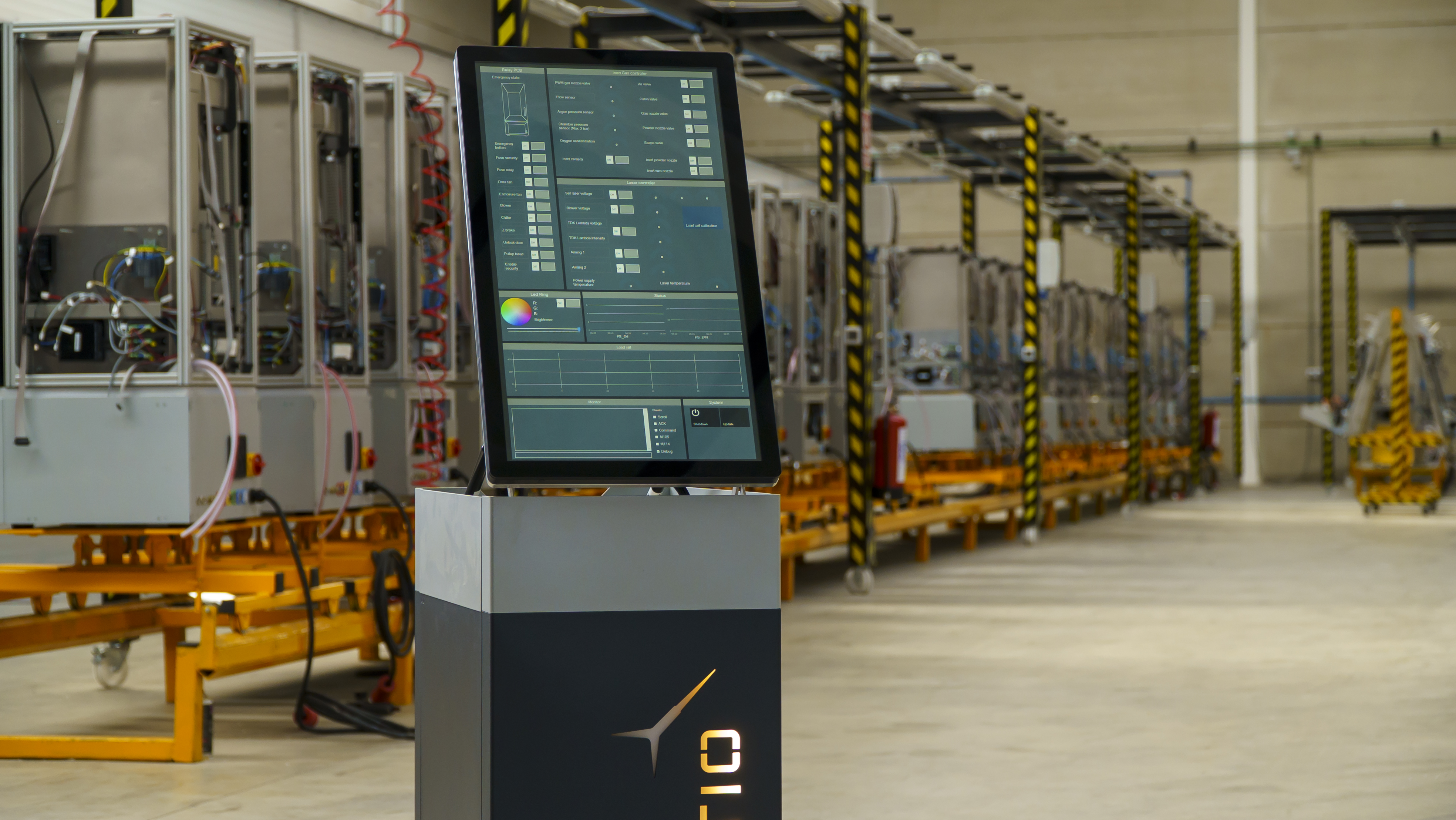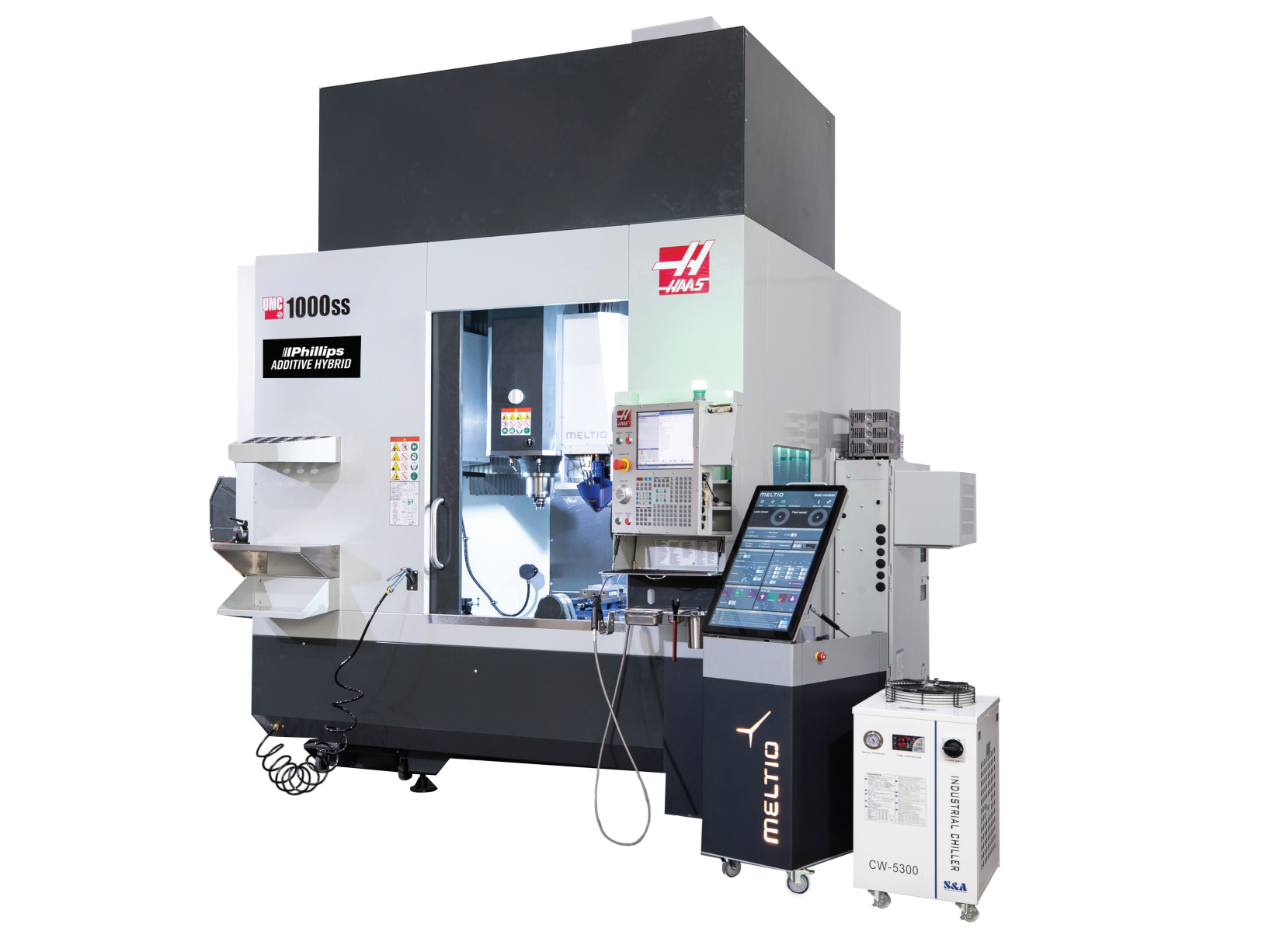Nominations for the 2021 3D Printing Industry Awards are now open, have your say on who is leading the industry now.
Manufacturing technology products and services provider Phillips Corporation has combined the capabilities of both subtractive and additive manufacturing processes in its newest manufacturing platform, the Phillips Additive Hybrid.
Phillips has integrated standard subtractive CNC machine tool technology platforms from Haas Automation with 3D printer OEM Meltio’s modular 3D printing cell, the Meltio Engine, to form its hybrid manufacturing platform. The combination couples traditional machining with Direct Energy Deposition (DED) 3D printing technology to provide a more cost-effective means of producing and repairing parts.
“Meltio is proud to welcome Phillips Corporation as a Haas hybrid integration partner,” said Brian Matthews, Meltio’s Chief Technology and Innovation Officer. “Hybrid manufacturing offers the benefits of both additive and subtractive processes in one machine, providing cost and complexity advantages that have not been accessible before.
“Meltio values the opportunity to work closely with Phillips to offer this exciting technology to its large base of industrial customers.”
The Meltio Engine
Initially presented at Formnext 2019, the Meltio Engine is an advanced control module for fitting existing CNC machines, robots and gantry systems with the firm’s technology, turning any motion platform into a hybrid metal 3D printing system.
The device operates on the same proprietary wire and powder-compatible Laser Metal Deposition (LMD) technology that powers Meltio’s M450 3D printer, which is the company’s take on the DED process. The Meltio Engine is designed to fuse the benefits of LMD with large-format control systems to enable metal part production on previously unseen scales.
The system’s LMD toolhead utilizes multiple high-power lasers to melt metal feedstock directly onto a substrate below, resulting in fully dense metal part production.
The latest version of the system was unveiled last year, equipped with several upgrades to further improve the affordability and accessibility of hybrid manufacturing for the production of fully dense metal parts.

The Phillips Additive Hybrid
The Phillips Additive Hybrid machine incorporates Meltio’s LMD laser head into Haas Automation’s VF, UMC, and TM Series CNC machine tool platforms to offer both subtractive and additive technologies from a single machine.
For seamless production, the Haas controller communicates with the Meltio engine through the Haas MFIN board. Each additive function is tied to a separate relay on the MFIN board. The M-codes are run from the NC program on the Haas control at key locations which, when activated, send a signal to the Meltio engine. The corresponding signals are received by the print engine and run the Meltio sub-routines that control the deployment of the additive print head, laser power, shielding gas solenoid, activation of the lasers, and wire feeder, among other functions.
Thanks to this combination, users will be able to 3D print and complete a part using just one machine. Parts can be repaired or modified by adding material via the system’s 3D printing capabilities and machine them to their final shape using the CNC elements.
The hybrid manufacturing platform also facilitates the use of different materials on a single part to ensure the best design, weight, and strength of components, while Meltio’s LMD technology enables the production of high-density metal parts with good resolutions.
For off-line programming of parts, Phillips partners and supports CAD/CAM software suppliers such as Autodesk, GibbsCAM, and Mastercam, and the system is backed by Phillips’ applications engineering, service, and training teams to provide users with support in leveraging its hybrid manufacturing capabilities.
“Phillips Corporation is pleased to be joining forces with Haas and Meltio to harness the combined power of affordable subtractive and additive manufacturing,” said Alan Phillips, Phillips Corporation CEO. “The commercial and federal industrial supply chains have accelerating interest, applications, and demand for 3D printed parts.
“The Phillips Additive Hybrid solution integrated with the Meltio Engine is an optimal fit for customers seeking to add exceptional capability to their subtractive tools while also entering or expanding upon their additive manufacturing capability – all in one machine.”

Meltio Engine technical specifications
The technical specifications for the Phillips Additive Hybrid vary depending on which Haas Automation platform is selected by the customer, of which technical specifications can be found here. Meanwhile, the technical specifications of the Meltio Engine are as follows:
| Dimensions | 390 x 540 x 1000 mm |
| Weight | 90 kg |
| Print envelope | Inherent to motion system |
| Laser type | Multiple 200W direct diode lasers |
| Laser power | 1200W |
| Laser wavelength | 976 nm |
| Power input | 208/230V single phase or 400V three-phase |
| Power consumption | 2-5 kW peak depending on selected options |
| Process control | Closed-loop laser and wire modulation |
| Cooling | Active water-cooled chiller included |
| Interface | USB, ethernet, wireless datalink |
| Wire materials | Stainless steel, carbon steel, titanium alloys, Inconel (copper in development) |
| Powder materials | Stainless steel, carbon steel, Inconel (copper in development) |
| Wire feedstock | 0.8-1.2 mm diameter |
| Powder feedstock | 49-90 µm particle size |
| Wire feeds | From one K300 spool up to two external wire drums |
| Powder feeds | Multiple plug and play powder feeders |
| CNC integration hardware | Actuated mounting hardware where the deposition head is stored in a sealed enclosure when not in use and automatically deployed when needed |
| Robot integration hardware | Mounting hardware for the deposition head and related sensors in robotic applications |
Nominations for the 2021 3D Printing Industry Awards are now open, have your say who is leading the industry now.
Subscribe to the 3D Printing Industry newsletter for the latest news in additive manufacturing. You can also stay connected by following us on Twitter and liking us on Facebook.
Looking for a career in additive manufacturing? Visit 3D Printing Jobs for a selection of roles in the industry.
Subscribe to our YouTube channel for the latest 3D printing video shorts, reviews, and webinar replays.
Featured image shows the Phillips Additive Hybrid powered by Haas Automation and Meltio. Photo via Meltio.



